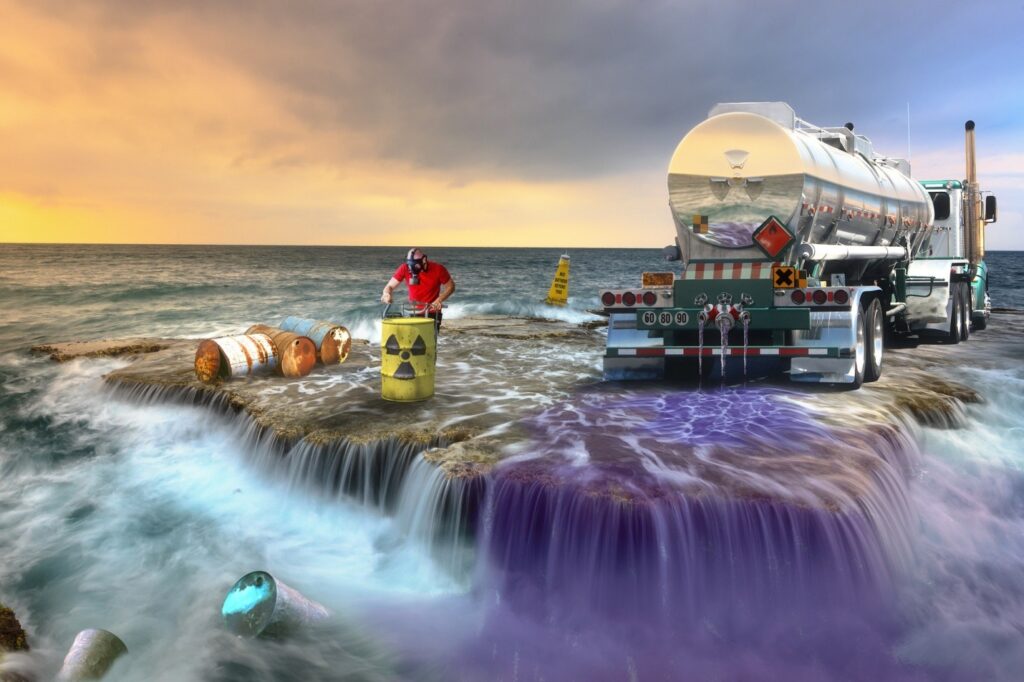Reclaim Waste Fundamentals Explained
Reclaim Waste Fundamentals Explained
Blog Article
What Does Reclaim Waste Mean?
Table of ContentsIndicators on Reclaim Waste You Should KnowThe smart Trick of Reclaim Waste That Nobody is Talking AboutEverything about Reclaim WasteThe Ultimate Guide To Reclaim WasteSome Of Reclaim Waste
Check out the kinds, incidents, and forms of liquid waste. Residential sewage waste describes the waste and items from a domestic sewage-disposal tank. This kind of waste is produced by human beings in houses, colleges, and other structures. This only includes sewage-disposal tanks that have a drain field. The proper monitoring and disposal of domestic sewage waste need fluid waste to be transferred to a sewage therapy plant where the correct methods and devices are applied to detoxify and take care of waste.
Commercial waste usually includes prospective threats, such as combustible products or a mixture of liquid and strong waste items, and calls for an extra innovative and detailed disposal procedure. The disposal of business waste generally involves the filtration of waste prior to transport to ensure risk-free and correct disposal. Industrial waste is developed from byproducts and drainage of industrial processes and manufacturing.
This type of waste can not make use of the exact same sewer administration transportation or processes as septic or industrial fluids. The commercial waste management process requires the examination and screening of fluid waste before it undergoes the disposal process (liquid waste disposal). Overflow waste is the fluid waste that comes from runoff and excess stormwater in extremely booming areas or cities
Drainage waste can create contamination and flooding if not taken care of properly. Ensuring correct waste administration can stop disasters and minimize environmental injury.
The 6-Second Trick For Reclaim Waste
Get in touch with PROS Services today to discover concerning our waste administration and disposal services and the proper methods to look after the liquid waste you create.
(http://tupalo.com/en/users/7813759)This supposed 'wastewater' is not just an essential resource however, after therapy, will certainly be launched to our land, waterways or the ocean. Utilized water from commodes, showers, bathrooms, kitchen area sinks, laundries and industrial processes is understood as wastewater.

water utilized to cool equipment or clean plant and equipment). Stormwater, a type of wastewater, is runoff that flows from farming and metropolitan locations such as roofings, parks, gardens, roadways, courses and rain gutters right into stormwater drains pipes, after rainfall. Stormwater flows without treatment directly to local creeks or rivers, ultimately getting to the sea.
Unknown Facts About Reclaim Waste
In Queensland, many wastewater is dealt with at sewage treatment plants. Wastewater is carried from residential or industrial sites through a system of sewage systems and pump stations, recognized as sewerage reticulation, to a sewer therapy plant.
The Department of Natural Resources encourages regional federal governments concerning handling, operating and keeping sewerage systems and treatment plants. In unsewered areas, neighborhood federal governments might need householders to mount individual or house sewer therapy systems to treat residential wastewater from toilets, kitchens, bathrooms and washings. The Department of Natural Resources authorises the use of family systems when they are shown to be reliable.
Many stormwater receives no therapy. In some new subdivisions, therapy of some stormwater to get rid of litter, sand and crushed rock has actually begun making use of gross pollutant see here catches. Wastewater treatment occurs in four stages: Eliminates solid issue. Larger solids, such as plastics and various other objects mistakenly discharged to sewage systems, are removed when wastewater is travelled through displays.
Makes use of tiny living microorganisms understands as micro-organisms to damage down and eliminate continuing to be liquified wastes and fine bits. Micro-organisms and wastes are incorporated in the sludge.
Reclaim Waste - An Overview
Nutrient removal is not offered at all sewer treatment plants because it calls for costly specialist tools. Clear fluid effluent produced after treatment might still consist of disease-causing micro-organisms - liquid waste removal.

This generally suggests wastewater needs to be dealt with or pollutants removed prior to it can be discharged to rivers. Most wastewater flows into the sewerage system. Under the Act, regional federal governments administer authorizations and licences for environmentally relevant tasks (Ages) including wastewater releases that might have a neighborhood effect. The department carries out approvals and permits to Periods entailing wastewater launches that might have a local or statewide effect.
The Basic Principles Of Reclaim Waste
Otherwise, examples are considered laboratory evaluation. Commonly numerous examinations are needed to develop the levels of each of the different pollutants such as oils, heavy metals and pesticides in water. Monitoring supplies accurate information about water high quality and can validate that permit problems are being met. The information obtained with monitoring gives the basis for making water high quality choices.
Report this page